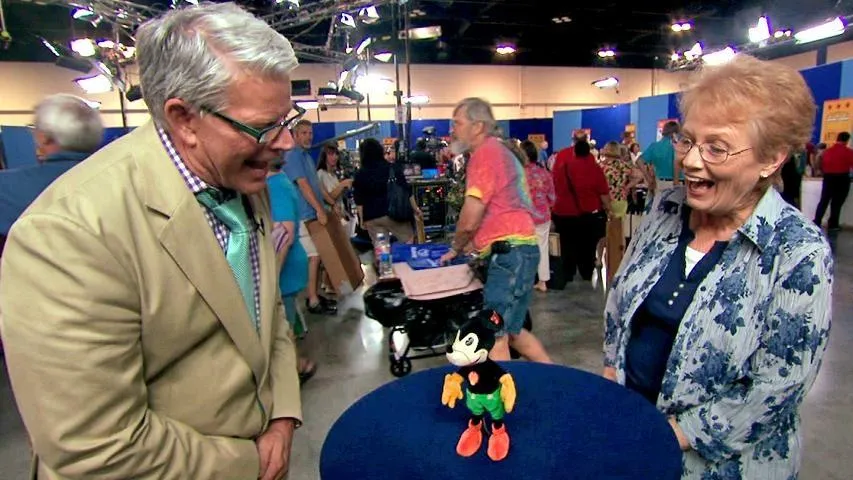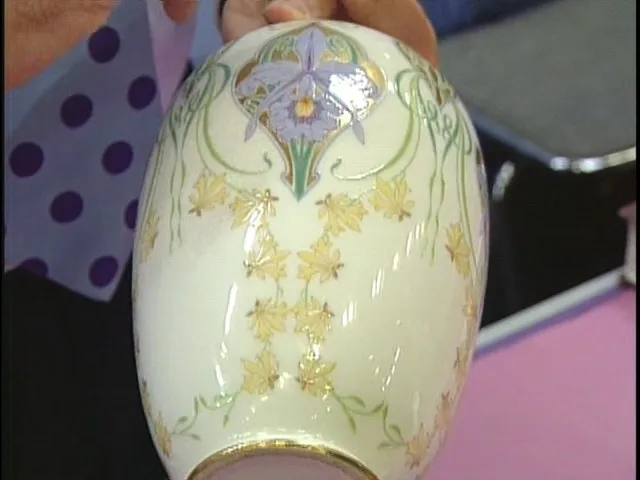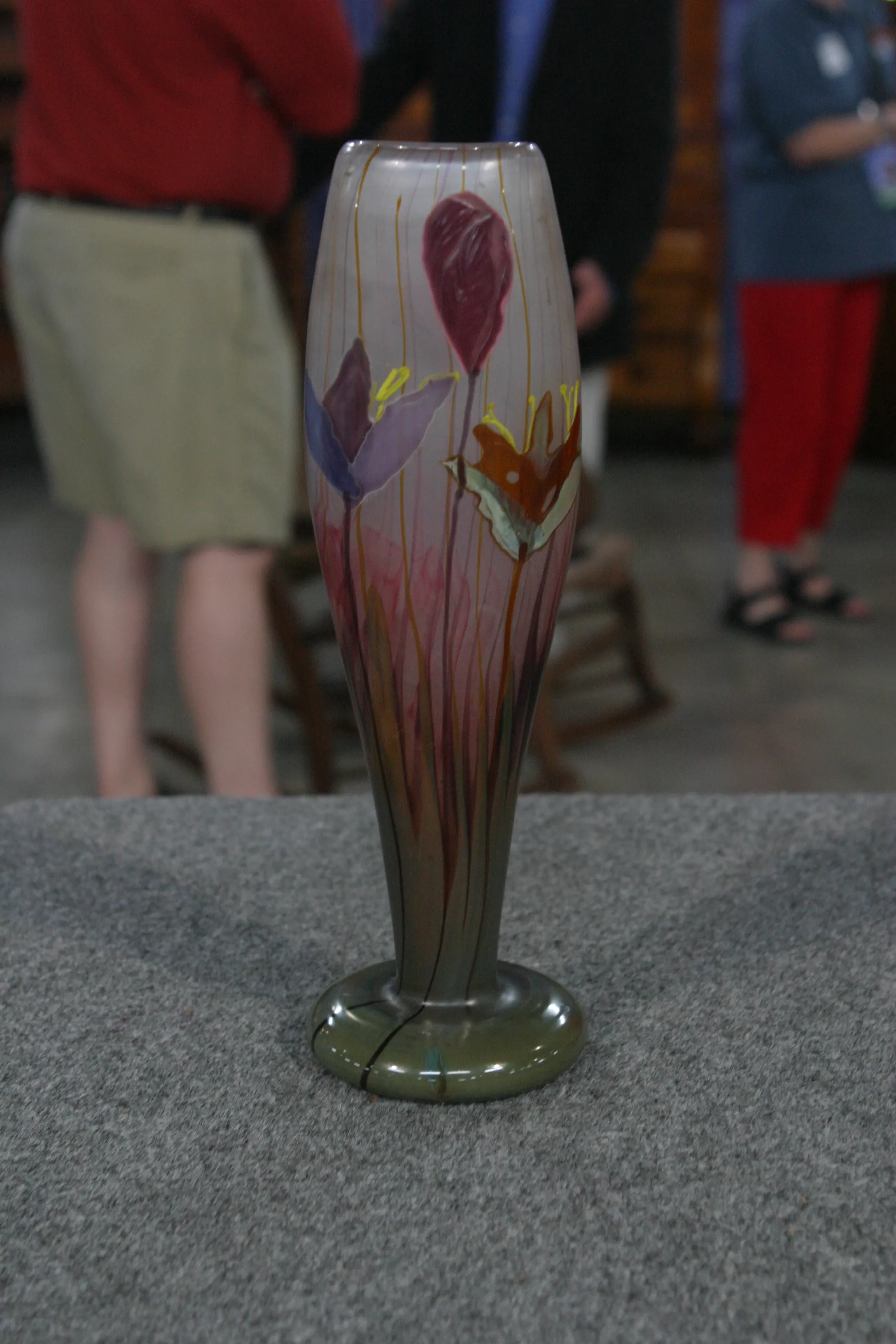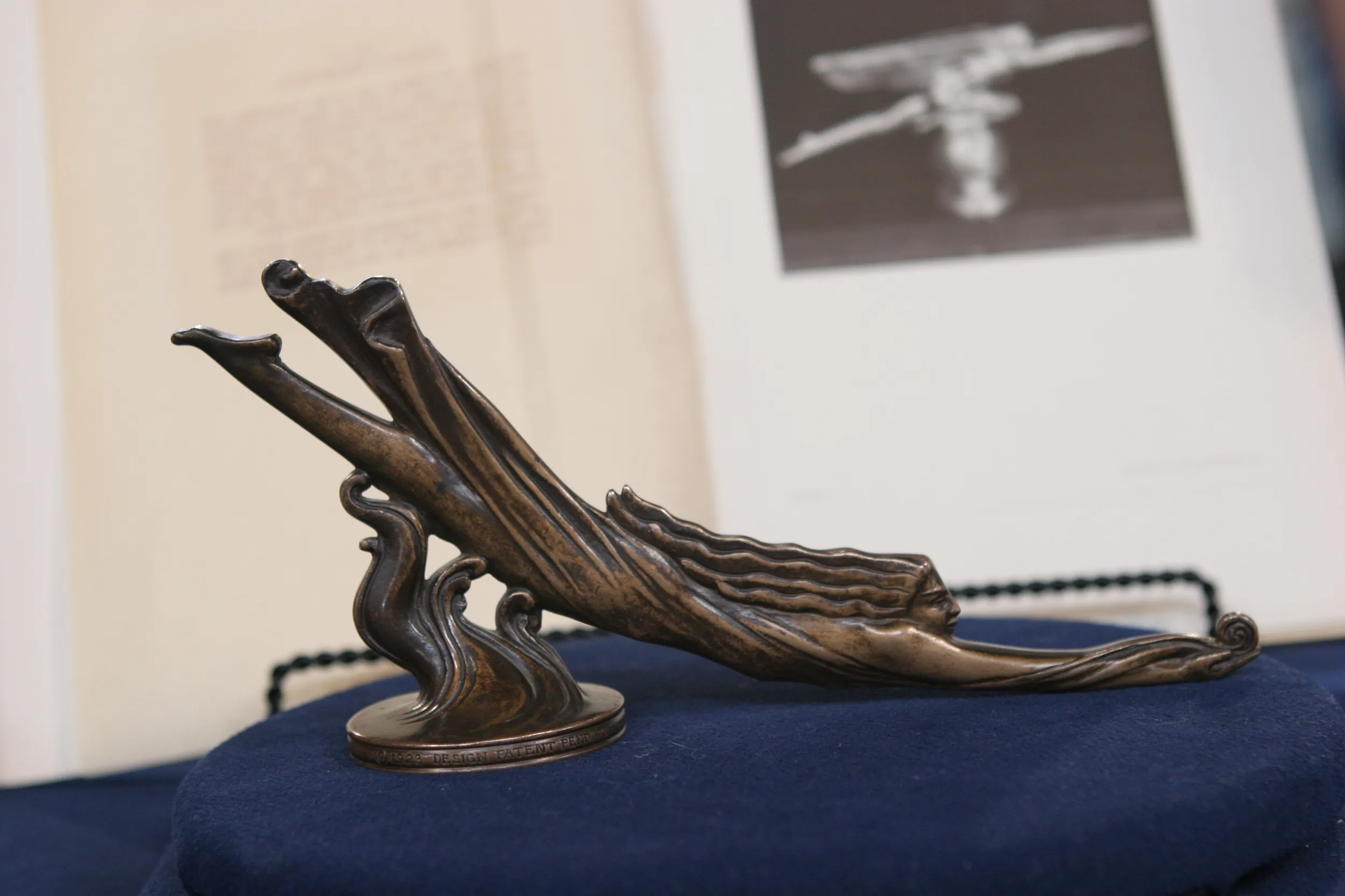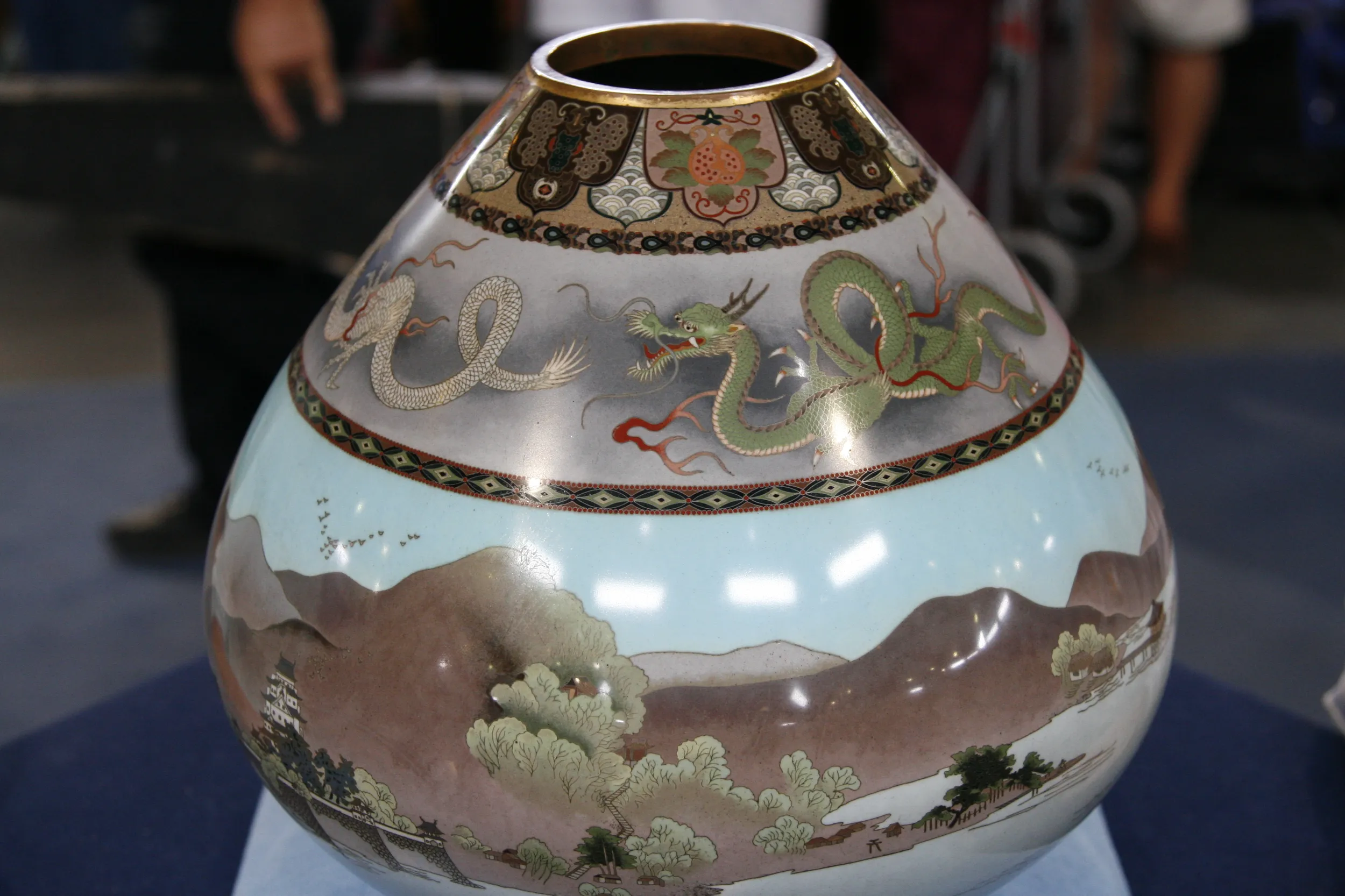GUEST: My wife and I love to go to garage sales and antique stores, and about six years ago I saw this sitting on a stand and it was, believe it or not, it was completely white.
APPRAISER: It was completely covered with white paint?
GUEST: It looked like white paint, and I thought, "Well, must be concrete maybe, or some kind of a plaster." And I said, "It'd look great in our yard." I kept looking at it and they wanted, like, $250 for it, and I said, "No, that's a little too much.” Came back the following week and looked at it again, it was down to $220. And about the third or fourth time I looked at it, it was about $185, so I decided, "Well, it's worth it," so I bought it. took it home and I said, "I'm going to take it in my little workshop "and see if I can remove a little paint and just see what it looks like underneath." And I proceeded to clean it, and it took three to four months of tedious work with little swabs and paint remover, and I worked it many hours every day for a while. After I finished, I found that we had one little broken piece out of a horn and one of the berries was missing, and I had a little chip out of the base. A friend of mine's a good restorer, and I took it to him, and they fixed it for me for about $250, maybe $275. And we love it. It's gorgeous, and I have a passion for it because it's that beautiful. A friend of mine who's an appraiser looked at it, and he thought it might be worth some pretty good money. He was saying, like, $2,000 to $5,000, in that range, he said. But that's all he gave me, and he said, "I'll do some more research," but I never got any more research on it.
APPRAISER: Well, first of all, I want to comment on the restoration. If you have a piece like this with some damages or losses, if you want to get it restored, you should, but it's better to get it done right instead of wrong. Bad restoration is not a good thing; good restoration is. And quite frankly, your friend did a very good job.
GUEST: Good, very good.
APPRAISER: And the price that you paid sounds incredibly reasonable. You could have easily paid a lot more money for perhaps not as good a restoration. We mentioned the marks on the bottom, so let's look at those.
GUEST: Okay.
APPRAISER: There are several unusual marks there, and we did some research on this mark, and virtually every appraiser at the table, we all looked at the mark. I searched on the Internet, and I didn't find anything on it.
GUEST: (laughs)
APPRAISER: So we have no idea who made this.
GUEST: (laughs)
APPRAISER: Let's look at the vase itself. I especially like the rippled, very highly detailed ribbons at the top, and these garlands of fruit are just terrific. To me, it's reminiscent of a lot of Renaissance period pottery made by potters such as Bernard Palissy in France, as well as della Robbia in Italy. Perhaps inspired by those types of potters, but certainly not a copy of anything that they did. It is a very curious ceramic body. It's definitely not pottery, and it's close to porcelain, but exactly what we would call it, again, I don't know. I would think there would have been a pair. I would have to say that a retail value would have to fall at least between $4,000 and $6,000, and perhaps more. I just think it's a remarkable, interesting thing.
GUEST: Well, very good.
APPRAISER: It raises more questions than it does answers.
GUEST: But that's okay.
APPRAISER: But it's just a neat piece.
GUEST: Thank you very much, really. We love it very much, and we're going to keep it, but that's great to know.

